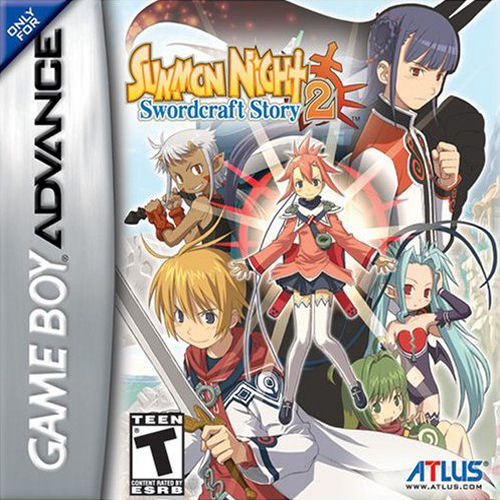

All in all, it relies a bit too much on trial-and-error, and is one of those aspects that seems to be designed to sell strategy guides. If you stumble upon a valid combination, you'll get a new summon monster, but if you get a wrong one, you'll take a tiny bit of damage. There are five different colored gems, each based on one of the five worlds, which can combined with practically any accessory. Rarely are summon monsters handed to you, so you'll need to create your own.

Most of these simply act as spells, dealing damage or healing allies, but some of them can also be called onto the battlefield and commanded as a regular unit. Most of the characters can equip gems, which in turn allows them to call upon different monsters. The primary distinction is of Summon Night, of course, the summon abilities. Mechanical warriors hail from the land of "Loreilal", angels and demons come from "Sapureth", creatures from Asian lore such as onis come from "Silturn", and half-humans, beasts, and fairies live in "Maetropa". Most of the action takes place in the human world of "Lyndbaum". There are five worlds in the Summon Night universe, not including the "real" world. This means you can keep weaker characters away from danger, and still give them an opportunity to level up. At the end of each stage, you're given a set amount of party experience, which you can distribute amongst any character you like. Additionally, unlike most SRPGs, characters do not gain experience in battles based off their actions. Therefore, you need to balance the tight line between offense and defense to really do well.
#Summon night swordcraft story 3 full#
Whenever they are attacked, they'll either shield themselves to reduce damage, or take the full brunt of the assault in order to take a swipe back at their foe. Most of your units can be set to "defend" or "counterattack" mode. There are a few unique elements that set Summon Night apart. Beyond equipping items and altering various elemental abilities, there's no real way to customize your characters, although there's usually a large roster of selectable units that build up over the course of the game. Although some battles can prove to be a bit difficult, it's nothing that a few battles spent grinding won't solve. Slain characters are removed immediately from the battlefield, although they are not killed permanently. They're also quite a bit easier, since they seem to be aiming for a target audience - the difficulty and complexity is roughly on the same level as Sega's forgotten (and nowdays, mostly befouled) Shining Force series. The major difference is that Summon Night is much more colorful and a bit more light-hearted - they're not nearly as comedy-based as any of the Nippon Ichi Strategy RPGs, but they're mostly devoid of the political drama portrayed in any of the Ogre Battle titles. Unit positioning and height plays a big role in proper strategy, as does counter-attacking. The basic interface and gameplay mechanics are practically lifted wholesale, and the PSOne games look almost identical, right down to the 2D graphics. Although they've received very limited exposure outside of Japan (only a few of the spinoffs have been localized), their attractive character artwork and heavy focus on plotline have won them a number of fans amongst the anime and manga-loving crowd.įor all intents and purposes, Summon Night is like a Tactics Ogre-lite.
#Summon night swordcraft story 3 series#
Summon Night began as a series of strategy-RPGs created by a small Japanese company called Flight-Plan and published by Banpresto.


 0 kommentar(er)
0 kommentar(er)
